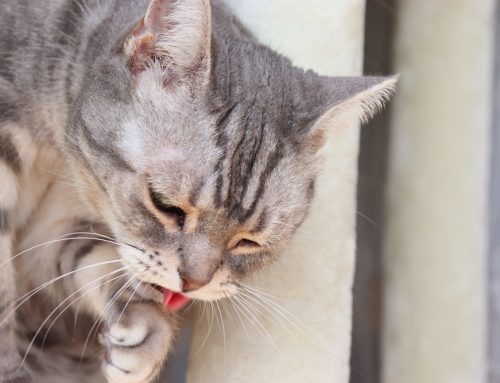- Examine the importance of feline oral care
- Offer tips to make vet visits better
- Talk about Spring Break – it’s coming!
2914 Lurleen B. Wallace Blvd
Northport, AL 35476
(205) 339-5555
Top 5 Dental Problems in Cats
February is National Pet Dental Health Month. So it seems appropriate that we talk about dental care.
With dogs, tartar and gingivitis tend to be kind of obvious – they sit around with their mouths open, dirty teeth visible to everyone (although it does take some effort to look at the back teeth). The other thing about dogs – they love to put their faces in ours, and treat us to their special form of halitosis. It’s funny (if not a little gross) to talk about bad breath in dogs, but the reality is that, like in people, these are signs of dental disease, and your pet’s teeth need to be professionally cleaned.
Cats are a little different. They don’t always build up tartar like dogs, they don’t pant or breath with their mouths open (if your cat does, please bring them in right away, that is an indication of respiratory distress), and they don’t always get right in our faces like our dogs tend to do.
But that doesn’t mean that cats don’t need good oral/dental care! It makes it even more important that we evaluate your kitty frequently…
Here are the top 5 dental disease in cats:
Stomatitis – this refers to moderate or severe inflammation in the back of the mouth. The cause is unknown, and treatment can be difficult. Believe it or not, sometimes removal of the teeth in that area is the only treatment (and that’s only really successful 60% of the time).
Juvenile hyperplastic gingivitis – periodontal disease is the most common inflammatory condition in cats, affecting 85-90% of cats over the age of 2 years. But sometimes it occurs earlier, as the permanent teeth are coming in (hence the “juvenile”). Hyperplasia is excess growth – these young kitties have a red, thickened line of swollen gum tissue right next to the teeth. If this isn’t controlled early with professional cleanings and home care (brushing), tooth or bone loss can result!
Squamous cell carcinoma – the most common form of oral cancer in both dogs and cats. This generally occurs later in life, and needs aggressive surgery and radiation for treatment.
Tooth fracture – the enamel on a cat’s tooth is thinner than on a dog’s, and fractured teeth are painful and need root canal or extraction. If you’ve ever cracked a tooth, you know!
Resorption – this common problem in cats is the breakdown of hard tooth material by cells of the body called odontoclasts. There are three different degrees of resorptive lesions, and require dental radiographs to differentiate. That is important, because the treatment is different for each different type.
Just like people, pets really, really need regular dental care! Taking care of your pet’s teeth will help them lead longer, happier, pain-free lives!
Making trips to the vet easier (and better)
We’d like to see your fur babies at least once a year, and we’d also like you to get the most out of these visits. The AVMA has issued a list of ten great tips to help you get the most out of coming to see us, and we thought we’d share them with you. You can visit the list on the AVMA’s website, but here is the short form:
- Get your pet used to its carrier and the car.
- If we don’t already have your pet’s medical record on file, bring it with you or have your previous veterinary team send or fax the records (we can make the call for you, if you’d like) – or, at a minimum, bring your own notes on your pet’s health and medical history.
- Arrive on time or a few minutes early for your appointment.
- Unless your children can sit quietly without distracting you or interfering with our team’s ability to examine or treat your pet or talk to you about your pet, consider leaving your children with a babysitter while you bring your pet in.
- Turn your cell phone off while you are in the exam room.
- Know what medications your pet is receiving (including supplements), as well as how much, how often and how long it is given, and/or bring them with you.
- Share your observations and concerns with us – after all, you know your pet better than anyone else does!
- Ask questions. Ask until you understand.
- Ask for handouts, brochures, or even reputable online sources of information about your pet’s condition.
- Follow our recommendations. They’re given for one very important reason – to keep your pet healthy.
Spring Break is coming!
It’s just the beginning of February, and the kids have been in school less than a month, but Spring Break is right around the corner, just over a month away!
Don’t forget to include your pets in your travel plans! From finding pet-friendly hotels along your route, to making sure you know where the emergency hospitals are (and, if your pets have any health conditions, please take copies of your medical records with you), planning ahead can bring peace of mind to pet vacations!
And if you plan to vacation without your pets (they aren’t always welcomed on the ski slopes, after all), please make your boarding arrangements now! Our space is limited, and fills up quickly at this time of year…








Leave A Comment